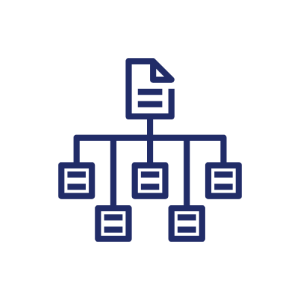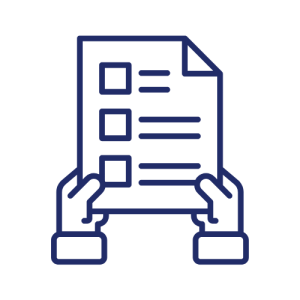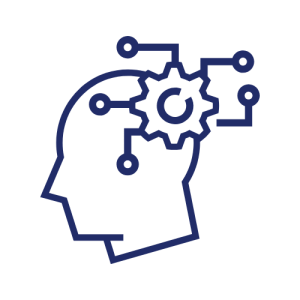Eassy Service
- Home
- Q & A
- Essay Service

What Do You Mean by Academic Essays?
An academic essay is a formal piece of writing which looks to reasonably persuade others on some subject. Ordinarily, this will consist of three most vital components: introduction, body paragraphs, and conclusion, each playing a clear role in understanding what is being said.
Purpose: The goal is to communicate complex ideas clearly and logically, responding to a specific prompt or question.
Structure of argument: The thesis of the essay is further developed step by-step with each paragraph representing an argument in support of or somewhat altering the central argument.
Evidence and citation: The strong academic essay proves its claims by balancing evidence and citations from several sources including statistics, quotations, and peer-reviewed articles-well done here.
Analyse and evaluate: A hallmark of critical thought is academic writing where sources are not simply summarized but also analysed and evaluated.
Formal tone: The tone is formal, using the elevated language of higher education and specifically avoiding slang or any use of colloquialism or contractions.
Purposeful conclusion: The conclusion gives the audience a summary of all the points discussed while also reiterating the thesis statement, wherein it subsequently suggests important and key questions that may be considered in further work regarding the topic.
Example:
An essay on the impact of social media on mental health could start with an introduction stating the growing concern, followed by body paragraphs analysing data and research studies, and end with a conclusion that provides recommendations for mitigating the effects.

What Are the Main Kinds of Essays?
There are numerous different forms of essays, each with its specific purpose. It is crucial to recognize these differences when determining an approach to take:
- Expository Essay:
- Purpose: To explain or inform the reader about a specific topic.
- Examples include scientific explanation or providing detailed instructions.
- Characteristics: Based purely on factual evidence, devoid of opinion or bias.
- Persuasive Essay:
- Purpose: To persuade the reader to agree with the writer’s viewpoint.
- Example: To argue a case in either favor of, or in opposition to, a particular policy, using reason, passion, and credible evidence.
- Analytical Essay:
- Purpose: To analyze a piece of work or theme.
- Example: Analyzing a book, article, or concept.
- Characteristics: It deals with breaking down and examining different components of the subject.
- Descriptive Essay:
- Purpose: To create a detailed description of a person, place, or event.
- Examples: Vividly describing a moment or a person that one is likely to remember.
- Characteristics: Focuses on sensory details; no argumentation is done.
Example:
For a persuasive essay on climate change, you might argue that government policies should prioritize renewable energy. For an analytical essay, you would deconstruct a key article or book on the subject.

What is a Thesis Statement?
A thesis statement is the backbone of your essay, presenting your main argument or position. Here’s what makes a strong thesis:
- Subsequently Clear and Focused – it clearly states the main argument and direction of your essay.
- It Guides Structure: It is an outline for the essay, as it would ensure coherence in times of writing.
- Debatable: A claim which is to be defended with evidence rather than stating a simple fact.
- Location: Typically, at the end of the introduction but can occur earlier.
- Brief: It about one or two sentences summing up what your argument is all about without dwelling in irrelevant details.
Example:
In an essay about animal rights, the thesis statement could be: “The unethical treatment of animals in factory farming is a violation of their basic rights and must be addressed through policy reform.”

What Makes a Strong Assignment Submission?
A strong assignment submission isn’t just about fulfilling basic requirements. It’s about demonstrating a thorough understanding of the topic and presenting a well-organized, insightful analysis.
- Clear Argument or Purpose: Clearly defines the objective and sticks to it throughout.
- Depth of Analysis: Goes beyond summarizing–provides deep insights, thoughtful analysis.
- Order and Coherence: Logical arrangement of ideas guarantees smooth transitions between sections.
- Relevant Evidence and Support: Cites credible sources providing solid evidence to support the argument.
- Accuracy and Precision: Grammatically correct, precise in the discipline vocabulary as well as in correct citations.
- Adherence to Guidelines: Follows the required format, word count, and citation style.
Example:
A well-structured essay would first introduce the topic, review relevant literature, discuss the methodology, and conclude with findings that relate back to the research questions.

What is the difference between coursework and essays?
Coursework is academic assignment along with essays, but both differ in a great many ways in scope, structure, and evaluation.
- Coursework:
- Includes all sorts of tasks like research studies, case studies, experiments, and presentations.
- More practical applications are often long-term projects.
- g.: Lab report or project on climate change data analysis.
- Essay:
- To formulate and develop argument: Argument under a specific issue or question, i.e. the task of the essay.
- Usually shorter and much more focused on the analysis and argument.
- For example, an essay that explored the causes of the French Revolution.
Key differences: Coursework engroups all the research-the data that is collected and carried out in the project-while an essay typically is focused on presenting an argument in structured form.

What is Reflective Writing in Academic Contexts?
Reflective writing refers to reviewing the personal experience in context with theory and academic learning. The role of reflective writing is to create self-awareness and facilitate intellectual growth by connecting personal insights with academic content. This kind of writing is predominantly found in nursing, education, and psychology.
Major Kinds of Models:
- Gibbs’ Reflective Cycle: Gibbs’ reflective cycle provides a framework for analyzing learning experiences. The main model consists of six stages; description, feelings, evaluation, analysis, conclusion, and action planning.
- Kolb’s Experiential Learning Cycle: The focus is on cyclical processes of learning from experience through reflection and experimentation
Reflective writing often is based on the first person, containing narrative elements and an analytical aspect that can greatly enhance understanding of both theory and practice.
Example:
In a nursing reflective essay, you might reflect on a specific patient care experience and connect your emotions and actions to established healthcare theories.

What are the Important Features of Reflective Essay?
A reflective essay is a mixture of experiential personal and critical reflection. This essay lets one reflect on some event or experience and relates this to some academic theories and models to demonstrate both p+ersonal and intellectual growth. The core of the reflective essay, thus, is:
- Use of First-Person Narrative
Reflective writing in most cases is selffulfillment. By using written form in the first person, it makes the exploration of the writer’s experiences so much more intimate and self-reflective.
- Specific Experience or Event
The essay is supposed to focus on a certain event or occurrence in one’s academic or professional life. The event can include some challenges experienced, decisions made, or even lessons learned therein.
- Reflection on One’s Thoughts, Feelings, and Behaviors
Here the author looks back at how the particular experience affected him or her: emotional response, thoughts, and behavioral changes. This section should show proof of introspection.
- Links to Theories or Conceptual Models
The writer connects personal experience to a theory or conceptual model, attesting to a higher level of understanding and growth.
- Conclusion: Lessons Learnt
Summarizes experience learned from that event and future application to actions or decisions. Underscore its significance for personal growth and professional development.
For example, when you reflect on intern experience, then you will also explain how an issue taught a lesson regarding the management theory of projects and how this may be applied in your future career.

What Is an Academic Report, and How Is It Structured?
An official document is an academic report that communicates factual information, research findings, or analyses, presented in a clear, concise structure. These reports were designed to give clear and comprehensive data to help with decision-makers, assessments, or future studies. The classical structures usually found in any academic report are:
- Title: This should concisely and descriptively give the main weighted issue of the report.
- Introduction: In this part, you make a purpose, scope, and methods in stipulation of data collection, methodologies of reading, or research controlled.
- Findings/Results: This forms the body of the report and highlights all the facts, data, or other observations that need interpreting. The use of tables, graphs, or charts is very common in showing key findings.
- Critical Evaluation or Discussion: Arranges the data into meaningful patterns, interpreting and linking the data to existing concepts or theories; in other words, the implication of the results within a comparative framework.
- Conclusion: A resume of the synthesized findings, bringing out major points.
- Recommendations: Whilst based on your findings, this will present suggestions on potential/possible steps to be taken.
- References: Citations must comply with the appropriate style, e.g., APA, Harvard.
Example:
An academic report on climate change might include a section on Findings/Results presenting data on global temperature rise, followed by a Discussion interpreting these findings in light of established climate models.

Is Using an Academic Writing Service Ethical?
The ethics of using an academic writing service are contingent upon how it’s used. Some applications are morally positive:
- Requesting Advice on Structure and Organization
The use of academic writing services to structure or organize your writing smacks of ethics. Clearly organization, coherence, etc., were among the pluses or supposed results.
- Learning about Format and Referencing Standards
If a service assists you in learning proper citation styles like APA, MLA, and Chicago, it’s fully ethical.
- Ask for Example Papers
Reviewing model answers is teaching itself in that it gives a clear image of how writing should be approached in academia, hence honing your skills.
- Feedback for Drafts
Feedback on the draft is critical and valuable, as this will help reshape your writing and enhance your academic writing.
It is unethical, however, to submit someone else’s work as your own. Most educational institutions’ academic integrity policy explicitly prohibits this conduct.

What Is Bloom's Taxonomy and How Does It Relate to Academic Writing?
Bloom’s Taxonomy is concerned with the different levels of cognitive skill required in an educational context. The taxonomy thus serves to develop a progressive method of teaching, which fosters critical inquiry in academic writing. The six levels include:
- Remembering: The ability to state basic facts and literature.
- Understanding: To give meaning to the information.
- Applying: The application of knowledge in novel context.
- Analyzing: To break down information into its constituent parts.
- Evaluating: To assess the ascertainment and worth of information.
- Creating: To give rise to new ideas or new products out of the knowledge.
Academic writing prioritizes higher levels of the taxonomy, such as Analyzing, Evaluating, and Creating, especially for research papers, critical essays, and literature reviews.
Example:
In research writing, students may be called upon for an analysis of past literature (Analyzing), gauging its relevance (Evaluating), and creating new theory or solutions (Creating).

How Does Critical Thinking Contribute to Academic Writing?
Critical thinking is a prerequisite for academic writing. It allows the authors to:
- Examine Information Source Credibility
Critical thinking considers if used sources can be relied on for authenticity and relevance concerning the topic.
- Realization of Assumptions and Biases
Recognizing assumptions and biases in the author’s as well as the sources’ perspective from which he presents an argument is required.
- Synthesize Different Points of View
Writers can combine different views to support more balanced and in-depth arguments.
- To make Evidence-Based Arguments
Critical thinking involves the same discipline in reasoning and evidence for supporting one’s position.
- Recognize Research Gaps
Identifying areas requiring additional inquiry or exploration is obtained through this.
Example:
In an academic essay, critical thinking would lead to questioning the validity of data sources and integrating contrasting viewpoints to strengthen the argument.
